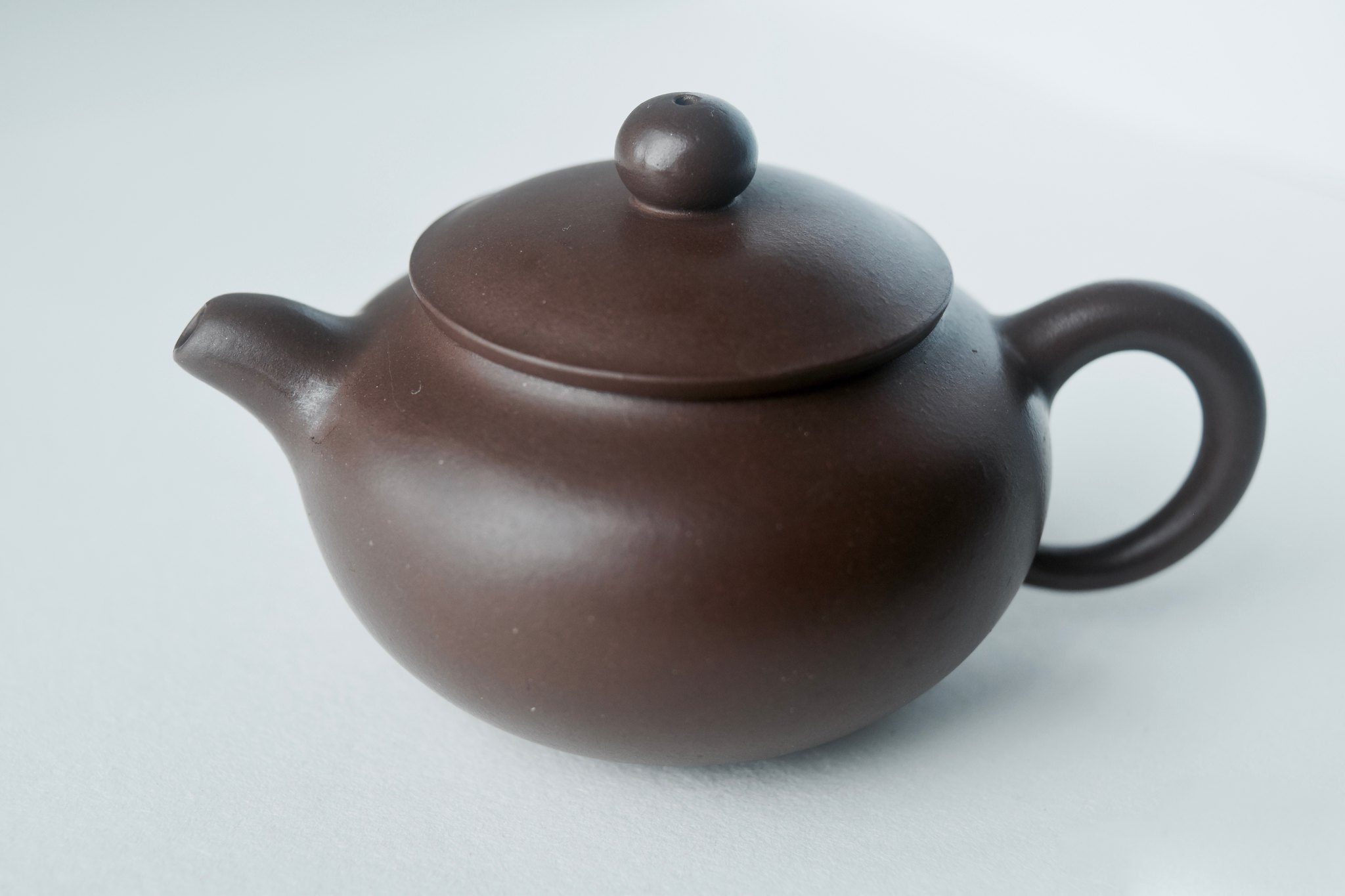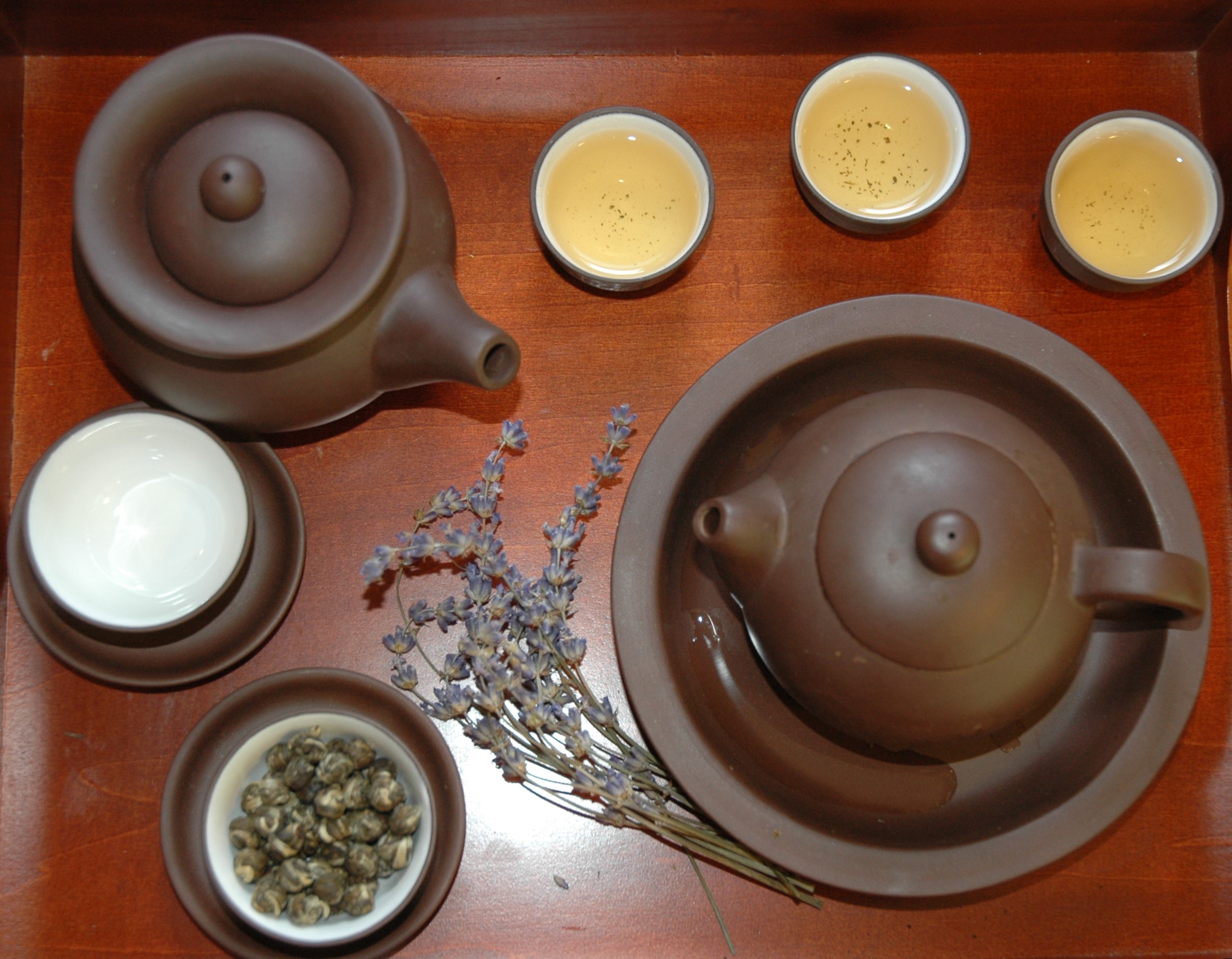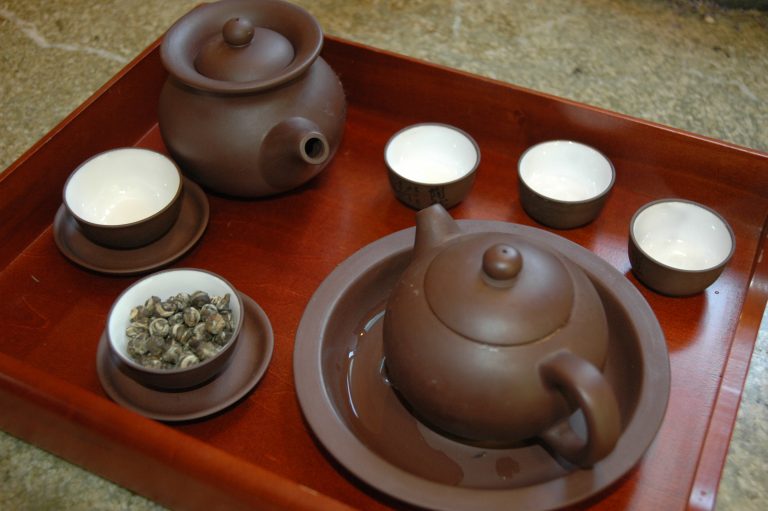As my design studio professor Paula Horrigan always stressed, a good design is “simple, elegant and direct.” When it comes to brewing tea, nothing fits the bill better than the traditional Chinese Yixing teapot. Meticulously hand-crafted, although modest in material and appearance, these tiny treasures are known for their extraordinary brewing quality.
Tradition
While tea drinking is believed to have begun over 3,000 years ago in the Shang dynasty, it was first consumed as a medicinal tonic, and prepared directly in the sipping cup or in an open pan from pressed or pulverized tea leaves. By the Song dynasty (960–1279), loose-leaf tea was being brewed as a beverage, but it wasn’t until around 1,500 that a specialized vessel for brewing was invented. Enter the Yixing teapot.
Yixing is a city in China’s eastern province of Jiangsu, known for its fine, purplish clay. An ancient text from the Zhengde Emperor’s reign (1506-1522) serves as a record for possibly the first teapot, carefully crafted by a Jinsha Temple monk from Yixing’s local clay.
Potteries sprung up, and the crafting and use of teapots spread throughout China, and eventually overseas, although Yixing is the only source for the unique purplish clay of an authentic Yixing teapot. To make the clay, rocks mined from the region are ground into a fine powder and mixed with water. The fresh clay is allowed to rest several days before being used.
Because these original teapots are fired unglazed, they absorb and retain the oils and aromas from each brew. This is believed to enhance the flavor of subsequent brews, and Yixing teapots are thus considered the best pots for brewing good tea. To avoid adulteration, one should only brew one type of tea in any given Yixing teapot.
Success
You are now signed up for our newsletter
Success
Check your email to complete sign up
Yixing teapots are traditionally smaller than most of the teapots we see in the West. Although the clay is sturdy enough to withstand boiling temperatures, it lacks the characteristics ideal for crafting larger pieces.
These diminutive dispensers have served as individual teapots, with the tea often drunk directly from the spout. They also gave rise to the “gongfu style,” where tea is served in tiny cups that can be quickly consumed. Multiple brews ensured that the tea was always hot and fresh.

Elegance
Yixing teapots recall the humble character of their contents being refined to perfection. Simple, loose tea leaves are brewed in natural clay vessels to bring out their full aroma and flavor. Crafted from a single slab of clay, the design is more elegant than elaborate.
Yixing teapots’ attractive dark color comes from an iron ore content in the clay. Combined with their simple shape, it gives these pots a universal, unadorned appeal.
The lid, in keeping with excellent design, serves more than one purpose. It keeps the steam in the pot to retain heat, and facilitates pouring in a clever way. A close fit to begin with, the lid forms a perfect seal when additional hot water is poured over the full vessel. A tiny hole through the knob allows enough air exchange for pouring, but when covered with the thumb (an easy feat with such a small pot) the flow is stopped.
The spout and handle, too, have been carefully considered. Level with the rim, the spout doesn’t spill; the handle is designed to fit a single finger for good balance when carrying and pouring.
Artistry
Such a simple design might seem easy to make, but artisans can train for several years to master the craft, and may spend many days, or even weeks to make a single pot. Although the work is done by hand using rustic tools, it is an exacting art, beginning with the clay-making.
The clay is prepared by breaking and pulverizing carefully sourced stone. A smooth texture is achieved by sifting, combining with water, and sieving for purity and fineness. The resulting clay is aged to improve plasticity for the fabrication as follows:
A clay slab is formed by pounding a patty perfectly flat with a wooden mallet. The dimensions for the pot are calculated and measured, and the clay is cut into various pieces that will be carefully shaped to fit, joined, and smoothed. The top and bottom circles that dictate the design are cut first.
The main body is then shaped from a seamless cylinder, formed by overlapping the edges of a circular band, and making a diagonal cut through both pieces for the joint. The cylinder is then pounded, plied, and smoothed into its finished form.
The spout is formed from a miniature cylinder, made with equal attention, and holes are pierced in the body at the base of the spout, providing a built-in strainer. Fitting the lid perfectly to the mouth requires both talent and skill.

Firing of the unglazed pot must be done under the correct atmospheric conditions. Pressure and humidity are factors that can ruin a pot if disregarded. The pot is also filled with sand to prevent cracking during the process.
Yixing and you
If we’ve piqued your interest in a Yixing teapot, it is not hard to find something to suit your taste — and your budget. Yixing teapots are still being made as described above, though much of the original clay and ore have been extracted. Vintage pots are thus quite valuable, while new ones range from fine pots made by well-known artisans to everyday, factory-made sets. If you have a Yixing teapot, you should consider it a small treasure.
Like a cast iron pan, a new Yixing teapot should be seasoned for use. To do this, gently boil the whole pot for ten minutes in a cushioned pot of filtered water. Next, the whole pot should be soaked in your chosen tea. With multiple strong brews from your Yixing teapot, fill a bowl with enough tea to cover the pot. Allow the pot to soak until the tea cools. Pat your Yixing teapot dry and it is ready for use.

A Yixing tea set will often come with a number of small cups — each with a capacity of about one ounce of tea — and saucers to match. There may also be a small pitcher for pouring the hot water (rather than bringing out the kettle), and a dish to place the brewing pot in. The dish allows you to pour hot water over each fresh brew, which not only helps keep the tea warm, but also seals the lid.
Yixing teapots are especially suited for oxidized teas, like black and oolong, since they can take the extra-hot water needed for brewing. Green and white teas can also be brewed in a Yixing pot, but the water should be allowed to cool several degrees below boiling first.
Never wash your Yixing teapot with soap or detergent, as the scents and soap will be absorbed into the porous clay and ruin your future brews. Use hot water and a clean cloth to wash it, and dry the pot before storing it in a prominent position for admiration between brews.













